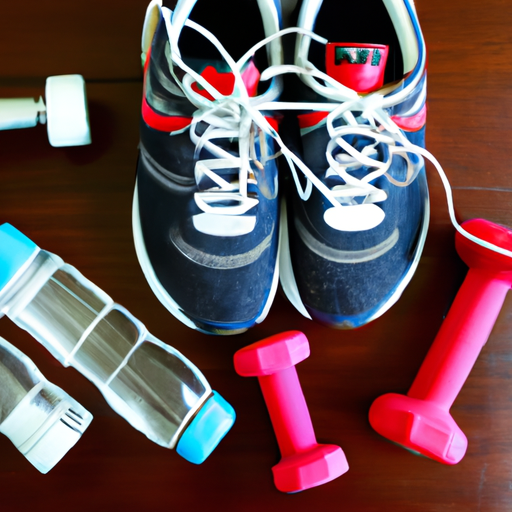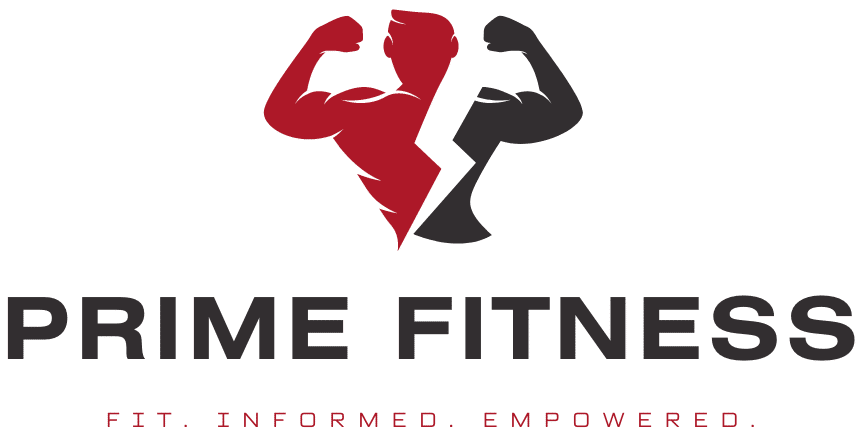In this article, we will discuss the importance of cardio when it comes to losing weight. You will learn how cardio exercises help burn calories and increase your metabolism, ultimately speeding up weight loss. We will also explore the different types of cardio exercises you can incorporate into your fitness routine and how long you should be doing them for maximum results. By the end of this article, you will have a better understanding of the role cardio plays in achieving your weight loss goals.

What is Cardio?
Cardio, short for cardiovascular exercise, refers to any activity that increases your heart rate and works your heart and lungs. It is often associated with activities like running, cycling, swimming, and dancing. Engaging in cardio exercises regularly has numerous benefits for your overall health, including weight loss.
Benefits of Cardio
Cardio exercises offer a wide range of benefits that go beyond just weight loss. By incorporating cardio into your fitness routine, you can:
- Boost your metabolism: Cardio increases your metabolic rate, allowing you to burn more calories even at rest. This can greatly contribute to weight loss and weight management.
- Improve heart health: Regular cardio exercises strengthen the heart muscle and improve cardiovascular health. It lowers the risk of developing heart diseases such as high blood pressure and heart attacks.
- Increase lung capacity: Engaging in cardio activities improves lung function and capacity, allowing more oxygen to be delivered to your muscles.
- Enhance stamina and endurance: Consistently participating in cardio workouts can help improve your stamina and endurance, making daily activities easier and more enjoyable.
- Reduce stress and improve mood: Cardio exercises release endorphins, the feel-good hormones, which can help reduce stress, anxiety, and depression. It promotes mental well-being and enhances overall mood.
- Boost energy levels: Regular cardio contributes to increased energy levels as it improves blood circulation and oxygen flow throughout the body.

Types of Cardio Exercises
Cardio exercises come in various forms, allowing you to choose activities that you enjoy and that suit your fitness level. Some of the most common types of cardio exercises include:
- Running or jogging: This is a great workout that can be done either outdoors or on a treadmill. Running helps burn a significant amount of calories and enhances cardiovascular health.
- Cycling: Whether outdoors on a bike or indoors on a stationary bike, cycling is a low-impact exercise that provides an excellent cardio workout while being easy on the joints.
- Swimming: Swimming is a full-body workout that engages all major muscle groups. It is particularly beneficial for those with joint issues or injuries.
- Dancing: Dance workouts are not only fun but also provide a great cardio workout. Whether it’s Zumba, hip-hop, or ballroom dancing, you can burn calories while moving to the rhythm of music.
- High-Intensity Interval Training (HIIT): HIIT involves short bursts of intense exercise followed by brief recovery periods. This type of workout is known for its effectiveness in burning calories and boosting metabolism.
Frequency and Duration of Cardio
The frequency and duration of cardio exercises depend on your fitness level, goals, and schedule. Beginners may start with three to four sessions per week, gradually increasing the frequency as their fitness improves. Ideally, it is recommended to engage in at least 150 minutes of moderate-intensity cardio or 75 minutes of vigorous-intensity cardio per week.
When it comes to duration, aim for 30 to 60 minutes per cardio session. If you’re short on time, even shorter bursts of exercise can still be beneficial. Remember to warm up before each session and cool down afterward to prevent injuries and promote proper recovery.

Cardio and Weight Loss
Role of Cardio in Weight Loss
Cardio exercises play a vital role in weight loss by helping you burn calories and creating a calorie deficit. When you burn more calories than you consume, your body taps into its fat stores for energy, leading to weight loss. Incorporating cardio into your fitness routine can significantly increase the number of calories you burn, aiding in your weight loss journey.
Calories Burned During Cardio
The number of calories burned during cardio exercises varies depending on factors such as body weight, exercise intensity, and duration. On average, a 155-pound person can burn approximately 300-400 calories in 30 minutes of moderate-intensity cardio. Intensifying the workout or increasing the duration can lead to even more significant calorie burn.
Impact of Cardio on Metabolism
Cardio exercises not only burn calories during the workout but also have a lasting impact on your metabolism. Regular cardio workouts can increase your metabolic rate, allowing you to burn more calories throughout the day, even while at rest. This is known as the “afterburn effect” or excess post-exercise oxygen consumption (EPOC). The EPOC effect means that even after you finish your cardio session, your body continues to burn calories at an accelerated rate.
Cardio vs. Strength Training
Differences between Cardio and Strength Training
While both cardio and strength training contribute to weight loss and overall fitness, they have distinct differences in terms of benefits and effects on the body.
Cardio exercises primarily focus on cardiovascular health and calorie burn. They improve endurance, strengthen the heart and lungs, and help with weight management. On the other hand, strength training involves resistance exercises that target muscle building and strength improvement. It helps increase lean muscle mass, which can further enhance your metabolism and overall fitness.
Benefits of Strength Training for Weight Loss
Strength training is often overlooked when it comes to weight loss, as cardio exercises tend to take the spotlight. However, incorporating strength training into your fitness routine can be highly beneficial for weight loss. Here’s how:
- Increased lean muscle mass: Strength training helps build lean muscle mass, which increases your basal metabolic rate (BMR). This means that even when at rest, your body burns more calories, aiding in weight loss.
- Improved body composition: Combining cardio with strength training prevents muscle loss during weight loss, resulting in a more desirable body composition.
- Enhanced calorie burn: Strength training can have a similar if not higher calorie-burning effect compared to cardio exercises, especially when using compound exercises that work multiple muscle groups simultaneously.
- Bone health: Strength training improves bone density and helps prevent age-related bone loss, reducing the risk of osteoporosis.
It’s essential to strike a balance between cardio and strength training for optimal weight loss and overall fitness.

Cardio Intensity and Fat Burning
Effects of Different Cardio Intensities on Fat Burning
The intensity of your cardio workout plays a significant role in the amount of fat burned. While lower-intensity cardio exercises primarily rely on fat as a fuel source, higher-intensity workouts burn a higher number of total calories, including both fat and carbohydrates.
Lower-intensity cardio exercises, such as brisk walking or light cycling, are effective for fat burning during the workout. They mainly use fat as an energy source due to the longer duration of exercise. However, higher-intensity activities like running or HIIT are more effective at burning overall calories and can lead to more significant fat loss in the long run. The intensity and duration of your workout should be tailored to your fitness level and goals.
High-Intensity Interval Training (HIIT)
High-Intensity Interval Training (HIIT) is a popular form of cardio workout that involves alternating short bursts of intense exercise with brief recovery periods. HIIT workouts are known to be highly effective for fat burning and weight loss. They increase the calorie burn not only during the workout but also after the exercise due to the EPOC effect.
Studies have shown that HIIT can help decrease body fat percentage and abdominal fat while preserving lean muscle mass. The high-intensity nature of HIIT stimulates the release of growth hormone, which aids in fat metabolism.
Incorporating HIIT sessions into your cardio routine can provide a time-efficient and effective way to burn fat and boost your metabolism.
Combining Cardio with a Healthy Diet
Importance of Healthy Diet for Weight Loss
While cardio exercises are beneficial for weight loss, it is crucial to combine them with a healthy and balanced diet. No amount of cardio can compensate for a poor diet. Here’s why a healthy diet is essential:
- Calorie control: To lose weight, you need to consume fewer calories than you burn. A healthy diet focuses on providing essential nutrients while creating a calorie deficit for weight loss.
- Nutrient intake: A well-balanced diet ensures that you obtain all the necessary vitamins, minerals, and macronutrients to support overall health and fitness.
- Energy levels: Proper nutrition fuels your body with the energy it needs to perform cardio exercises effectively. Consuming a combination of complex carbohydrates, lean proteins, and healthy fats can provide sustained energy levels.
- Faster recovery: A nutritious diet promotes faster recovery after workouts and helps prevent muscle loss.
Tips for Combining Cardio and Diet
To effectively combine cardio with a healthy diet for weight loss, consider the following tips:
- Eat a variety of whole foods: Include plenty of fruits, vegetables, whole grains, lean proteins, and healthy fats in your diet.
- Stay hydrated: Drink enough water to support your workouts and overall health. Proper hydration is crucial for optimal performance during cardio exercises.
- Time your meals: Plan your meals around your workouts. Eating a balanced meal with carbohydrates and protein before your workout can provide the energy needed for optimal performance. Consuming a post-workout meal within the first hour after exercise can aid in recovery.
- Monitor portion sizes: Pay attention to portion sizes to avoid overeating. Practice mindful eating and listen to your body’s hunger and fullness cues.
- Seek professional guidance: If needed, consult a registered dietitian or nutritionist to create a personalized meal plan tailored to your specific needs and goals.
Combining cardio exercises with a healthy diet will accelerate your weight loss progress and contribute to overall well-being.

Cardio and Overall Health
Cardiovascular Health Benefits
Engaging in regular cardio exercises has a significant positive impact on cardiovascular health. Cardio workouts strengthen the heart muscle, improve blood circulation, and help regulate blood pressure. The following are some cardiovascular health benefits:
- Reduced risk of heart diseases: Regular cardio exercises can lower the risk of developing heart diseases such as coronary artery disease, heart attacks, and strokes.
- Lowered blood pressure: Consistent aerobic exercise has been shown to effectively lower blood pressure, especially in individuals with hypertension.
- Decreased cholesterol levels: Cardio exercises help increase HDL (good) cholesterol and decrease LDL (bad) cholesterol, improving overall cholesterol levels.
- Enhanced blood vessel function: Regular cardio workouts improve blood vessel function and increase their flexibility, reducing the risk of arterial stiffness and blockages.
By keeping your heart healthy through regular cardio exercises, you can significantly lower the risk of cardiovascular diseases and improve your overall well-being.
Improved Mental Health
In addition to the physical benefits, cardio exercises also have a positive impact on mental health and well-being. Regular aerobic exercise can help:
- Reduce stress and anxiety: Cardio workouts release endorphins, commonly known as the “feel-good” hormones, which can help reduce stress and anxiety levels.
- Combat depression: Exercise has been shown to be an effective tool in managing symptoms of depression. Cardio workouts stimulate the release of endorphins, serotonin, and other neurotransmitters that can improve mood and combat depression.
- Boost cognitive function: Engaging in cardio exercises improves blood flow to the brain, enhancing cognitive function, memory, and overall brain health.
- Increase self-esteem: Regular exercise, including cardio, can boost self-esteem and body image. Feeling good about your physical fitness and appearance can positively impact mental well-being.
Incorporating cardio workouts into your routine can provide numerous mental health benefits alongside the physical advantages.
Effective Cardio Workouts
Popular Cardio Workouts
There are countless options for cardio workouts, and choosing the right one depends on your preferences, fitness level, and goals. Here are some popular cardio workouts:
- Running: Running is a versatile and accessible cardio exercise. You can run outdoors or on a treadmill, providing an effective way to burn calories and improve endurance.
- Cycling: Whether you prefer outdoor cycling or indoor spinning classes, cycling is a low-impact cardio workout that targets the leg muscles while increasing cardiovascular fitness.
- Swimming: Swimming is a full-body cardio exercise that is gentle on the joints. It engages all major muscle groups and provides an excellent cardiovascular workout.
- Jumping rope: A skipping rope is a portable and affordable fitness tool that offers a high-intensity cardio workout. It improves coordination and endurance while burning calories.
- Group fitness classes: From Zumba to dance cardio classes or kickboxing, group fitness classes offer a fun and energetic way to get your heart rate up and burn calories. They also provide a social and supportive environment.
Choosing the Right Cardio Workout
When selecting a cardio workout, it’s crucial to consider factors such as your fitness level, personal preferences, any underlying health conditions, and access to equipment or facilities. Choose activities that you enjoy and are more likely to stick to in the long term. Mixing up your cardio routine with different exercises can keep you motivated and prevent boredom.
It’s also essential to listen to your body and adjust the intensity and duration of your workouts as needed. Start gradually and gradually increase the intensity or duration over time to avoid injuries and burnout.
Cardio for Weight Loss Plateaus
Breaking Through Weight Loss Plateaus with Cardio
Weight loss plateaus are common during a weight loss journey. As your body adapts to your fitness routine and caloric deficit, weight loss can slow down or even stall. Incorporating cardio exercises can help break through these plateaus and continue making progress.
Cardio workouts increase the calorie burn and create a larger calorie deficit, which can jump-start your weight loss again. By introducing different types of cardio exercises or increasing the intensity or duration of your workouts, you can challenge your body and overcome plateaus.
Adjusting Cardio Routine for Continued Results
To continue seeing results, it’s essential to adjust and fine-tune your cardio routine. Here are a few tips:
- Increase intensity: Gradually increase the intensity of your cardio exercises by incorporating intervals of higher intensity or adding resistance.
- Extend duration: If you have been doing shorter cardio sessions, consider extending the duration to burn more calories.
- Vary your workouts: Mix up different types of cardio exercises to engage your muscles in different ways and keep your body challenged.
- Try new activities: Introducing new activities or exercises can prevent boredom and keep you motivated. It’s a great way to break through a weight loss plateau.
- Monitor your progress: Keep track of your workouts, including distance, time, and intensity, to identify areas for improvement and adjust your routine accordingly.
Remember, consistency is key. Stick to your cardio routine even after breaking through a weight loss plateau to maintain your progress and continue reaching your goals.
Overcoming Cardio Challenges
Addressing Common Cardio Challenges
Cardio exercises can sometimes pose challenges, making it difficult to stay consistent. Here are some common challenges and how to address them:
- Time constraints: If lack of time is a challenge, try breaking your workouts into shorter sessions throughout the day. Even 10-minute bouts of cardio can be effective.
- Lack of motivation: Find a workout buddy or join group fitness classes to stay motivated. Setting goals and tracking your progress can also help.
- Joint issues or injuries: If you have joint issues or injuries, opt for low-impact cardio exercises like swimming or cycling to minimize stress on the joints. Consult a healthcare professional for guidance if necessary.
- Boredom: Spice up your cardio routine by trying new activities or incorporating different types of workouts. Listen to music or podcasts to keep yourself entertained while working out.
Tips for Staying Motivated
To stay motivated and consistent with your cardio workouts, try the following tips:
- Set clear goals: Establish specific, measurable, and attainable goals that are important to you. Whether it’s weight loss, improved endurance, or completing a race, having a clear goal can provide motivation.
- Find an accountability partner: Work out with a friend or family member who shares similar goals. You can motivate and push each other to stay on track.
- Track your progress: Keep a workout journal or use fitness apps to track your progress. Seeing improvements, whether it’s increased distance, improved speed, or reduced workout times, can boost motivation.
- Reward yourself: Treat yourself to small rewards when you achieve milestones or stick to your cardio routine consistently. It can be something as simple as a relaxing bath or a new workout outfit.
- Mix up your routine: Explore different types of cardio exercises or try new activities to prevent boredom. Joining group fitness classes or using online workout platforms can introduce variety into your routine.
- Remind yourself of the benefits: Regularly remind yourself of the numerous benefits cardio exercises offer, both physically and mentally. Focus on how you feel after each workout and the progress you are making towards your goals.
Remember, motivation may fluctuate, but staying consistent and committed to your cardio routine will yield long-term results.
Conclusion
Cardio exercises play an essential role in weight loss journeys and overall health. Regular cardio workouts offer numerous benefits, including increased calorie burn, improved cardiovascular health, and enhanced mental well-being. Whether you choose running, cycling, swimming, or dancing, incorporating cardio into your fitness routine can greatly contribute to your weight loss efforts.
While cardio is crucial for weight loss, it is essential to adopt a balanced approach that combines cardio exercises with strength training and a healthy diet. Strength training helps build lean muscle mass, which can further boost your metabolism and enhance weight loss. Pairing cardio exercises with a well-rounded diet that focuses on proper fueling and nutrition will maximize your weight loss efforts.
Overcoming cardio challenges and staying motivated can be achieved by setting clear goals, tracking progress, and finding activities you enjoy. Remember, consistency is key, and each cardio workout brings you one step closer to your weight loss goals and a healthier lifestyle. So, lace up your sneakers, find activities you love, and make cardio an integral part of your weight loss journey.





